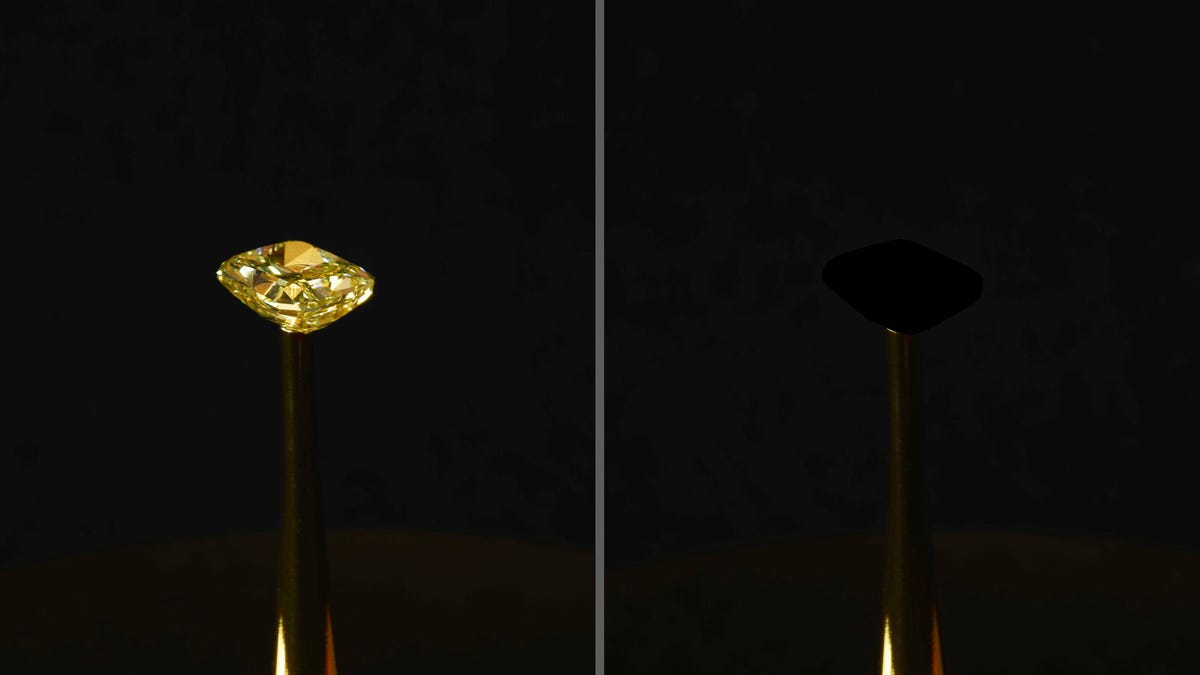MIT unveils new 'blackest black' material and makes a diamond disappear
MIT joins a fascinating field that already includes Vantablack.
What do you do with a $2 million natural yellow diamond? If you're at the Massachusetts Institute of Technology, you coat it in a wild high-tech material that makes any object look like it fell into a black hole.
The coated diamond is now a piece of art called The Redemption of Vanity, a collaboration between Diemut Strebe, artist-in-residence at the MIT Center for Art, Science and Technology, and Brian Wardle an MIT aeronautics and astronautics professor.
BMW painted an SUV in Vantablack as a smooth marketing move.
The diamond will be on exhibit at the New York Stock Exchange until Nov. 25, giving viewers a chance to see MIT's new carbon nanotube material in action.
"The unification of extreme opposites in one object and the particular aesthetic features of the CNTs caught my imagination for this art project," Strebe said in an MIT release.
MIT described the carbon nanotubes as "microscopic filaments of carbon, like a fuzzy forest of tiny trees" that's grown on an aluminum foil surface. "The foil captures more than 99.96 percent of any incoming light, making it the blackest material on record," MIT said in a Thursday release.
Super-dark carbon nanotube materials are of interest for optical equipment and aerospace applications. The most famous carbon nanotube "blackest black" material comes from UK company Surrey NanoSystems, which unveiled Vantablack in 2014. Surrey has since developed a sprayable version of Vantablack.
The MIT team led by Wardle compared its CNT material to known data on other carbon nanotube materials, including Vantablack. Wardle told CNET that MIT's material reflects less light than previous materials, making it the blackest-black champ.
Though it's tempting to put MIT's CNT material and Vantablack into a cage to fight it out, the human eye can have trouble determining which one really is more black. Rather than rivals, it may be more useful to think of them as options.
The MIT team has offered to make its CNT black process available to artists for noncommercial pursuits. British sculptor Anish Kapoor has exclusive rights to use Vantablack in art projects. The wider art community has turned to an acrylic paint called Black 3.0 for its darkest designs, but MIT's work may offer a new way to explore the depths of black through art.
Wardle told CNET the team has no plans to give the material a catchy name and is instead focusing on MIT's mission to create and disseminate knowledge by making the material available for art and science applications.
Strebe and Wardle shared their thoughts on this in the release about The Redemption of Vanity, saying, "We do not believe in exclusive ownership of any material or idea for any artwork and have opened our method to any artist."
Despite its darkness and virtual disappearance, the diamond now reflects something larger than itself: a brilliant intersection between science and art.
Surrey Nanosystems didn't have a comment.


